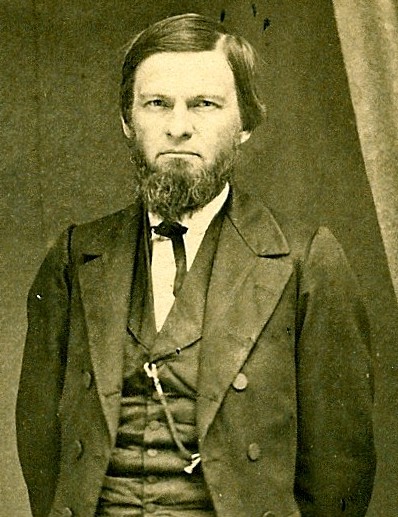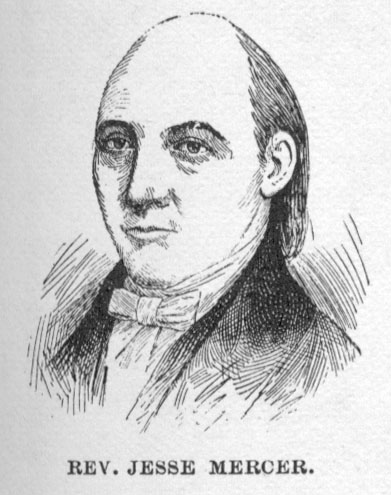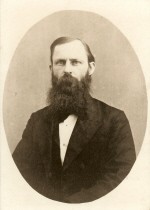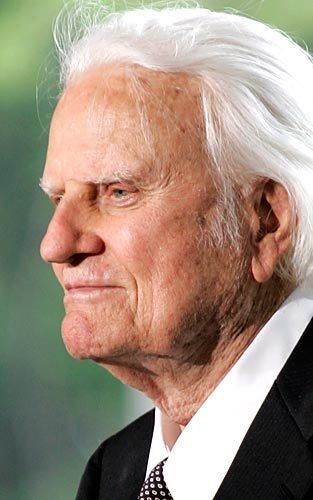Timeline of the Southern Baptist Convention
1608
John Smyth and Thomas Helwys organize first English-speaking Baptist Church
John Smyth and Thomas Helwys left persecution in England and formed the first English speaking Baptist congregation in Amsterdam in Holland. These congregants separated from the Church of England and believed that membership in the local church body should be voluntary, based upon evidence of conversion, and were Biblically baptized after their conversion. Helwys eventually returned to England in 1612 and formed the first Baptist Church in England. Obviously the positive steps of these early Baptists had a large impact during a time of protestant reformation.
1638
London Baptists organize first Particular Baptist Church
1639
Providence Baptist Church organizes first Baptist Church in North America
1629-1713
William Screven
Ordained in 1682, by the Baptist Church in Boston, William Screven led a small Kittery, Maine church to Charleston, South Carolina due to religious beliefs and doctrinal understanding. Screven was jailed, fined, and eventually forced to leave Maine, in 1696, because of his beliefs and teaching about believer’s baptism. The small Kittery church became what is now known as First Baptist Church of Charleston, South Carolina. Charleston FBC is considered the first baptist church in the south. His positive impact on the SBC can be found in the future of church congregational polity.
1696
Charleston FBC – First Baptist church in the South
1707
Philadelphia Baptist Association – First Baptist association

5 churches in New Jersey and Philadelphia, in colonial America, formed the Philadelphia Baptist Association. This first association stressed congregational authority but served as oversight for Preaching, training, and administering of church discipline and ordinances. The first 5 churches met once a year and grew in number to hundreds of churches. The association was and has been both positive and helpful in establishing confessions of faith and sound Baptist doctrine.
1740
George Whitefield preaches in Baptist church in Charleston at start of First Great Awakening
1752
Charleston Baptist Association – First Baptist association in the South
1758
Sandy Creek Baptist Association – Center of Separate Baptist movement
1796
John Taylor’s preaching begins Second Great Awakening
1814
Triennial Convention formed
1821
Baptists appoint Lott Cary as first African-American missionary

Born in Virginia, from a slave family, Lott Cary was saved in 1804, became the First Baptist Church, in Richmond, Virginia, eventually bought his freedom, and in 1815 formed the Richmond African Baptist Missionary Society. He 1821 Lott Cary became the first African-American missionary in Africa. He formed the Providence Baptist Church in Morovia, Liberia and is also recognized as a ‘founding father’ of the free nation of Liberia. His impact was positive towards helping establish churches, schools and became an encouraging influence to missions activities in Africa.
1789-1826
Ann Judson

Ann Judson and her husband, Adoniram Judson were some of the first missionaries from America to India and Asia following the Second Great Awakening and the call to spread the Gospel to unreached areas of the world. They lost support from their denomination (the American Board of Commissioners for Foreign Missions) due to their change in beliefs and understanding of the doctrine of believer’s baptism. The Judson’s were baptized by immersion and became some of the first American Baptist missionaries. Ann Judson died at 37 in Burma, but her positive legacy can be found through helping to improve education for women, church planting, many salvations, helping to translate the Bible to Burmese, and becoming an inspiration for many missionary efforts in Asia.
1827-1895
John Broadus

Born in 1827, John Broadus was a respected and gifted scholar and dynamic preacher who was instrumental in growing emphasis on education to Southern Baptists. He was a founding member of the Southern Baptist Theological Seminary in Greenville, South Carolina and later became its second President. He helped found the first Sunday School Board of the SBC which commissioned and produced education curriculum and books used to teach children and adults Biblical Doctrine. His positive impact on the SBC is offset by the negative impact felt by his statements and actions during the American Civil War which included him owning slaves and defending the right to slavery through independence of the southern states.
1769-1841
Jesse Mercer

Jesse Mercer was a baptist pastor at several churches in middle Georgia during the late 1700s and early 1800s. He helped form the General Association of Georgia Baptists, and was even a delegate to Georgia’s constitutional convention in 1798. Eventually he would become the Georgia Baptist Convention’s first president in 1822 and would serve as president until his death. He was instrumental in founding a “Southern Baptist College” which would become Mercer University in 1837.
1830
Baptists Disfellowship Cambellites
1845
Southern Baptist Convention (including Foreign and Home Mission Boards)
1859
Southern Baptist Theological Seminary founded
1861-1865
Civil War
1836-1919
Crawford Toy

Crawford Toy was a scholar and was in the first student class of Southern Baptist Theological Seminary. After the Civil War, he became the fifth professor at SBTS, but by the end of his life, he had abandoned Christian faith. In 1879, after many attempts by fellow professors and colleagues to correct his heretical beliefs, Toy resigned and would become a polarizing figure in academics as many outside of orthodoxy argue that his treatment from SBTS was poorly handled. In time, he would never correct his heretical beliefs. He had a negative impact on the SBC in this regard, but the firm stance from SBTS for orthodox Biblical interpretation and education must be seen as positive.
1879
Toy’s dismissal from SBTS
1888
First Lottie Moon Christmas Offering
1890
Alberto Diaz to Cuba as SBC Missionary
1909-2002
W. A. Criswell

The positive influence of W. A. Criswell on the SBC is evidenced by a lifelong love of pastoral service as he preached the Bible faithfully to many. He is known as the “patriarch of the conservative resurgence,” during a time where liberalism threatened historical and orthodox interpretation of the Bible. He was elected as president of the SBC two times and served more than 50 years as pastor of First Baptist Church in Dallas, Texas. However, the negatives cannot be ignored as he advocated for segregation and held questionable views of race and racism, though he later repented of these views.
1840-1912
Lottie Moon

Lottie Moon is perhaps the most well-known SBC missionary. She was the first female and single missionary in China from 1873 to 1912. She became an influential teacher who would teach the Bible and the Gospel to the lost in China, but also was known due to her writings and letters calling on Southern Baptists to become aware and involved in the lossness of the world. Her positive influence on SBC missions cannot be measured as she continued to train new missionaries and was known to give her money and food to the poor up until the day she died at 72 years old on Christmas Eve, 1912. The annual Christmas offering for international missions is named after her, and the money raised goes to support thousands of missionary families all over the world.
1925
Baptists adopt Cooperative Program and Baptist Faith and Message
1860-1928
Edgar Y. Mullins

Edgar Mullins was a professor, Pastor, and later President of The Southern Baptist Theological Seminary from 1899 to 1928, President of the SBC from 1921 to 1924 and was the primary architect in the 1925 Baptist Faith and Message. His legacy is great, but can be seen as negatively controversial or positively impactful depending on one’s view of individual theology. His centrist views on creeds and fundamentals have most definitely shaped the Southern Baptist Convention to this day as conservatives and fundamentalists both claim him as an ally to their view.
1850-1938
Annie Armstrong

Annie Armstrong’s life was tied to missions as she was born into a family of well known Baptists. She organized and formed the Woman’s Missionary Union to help support foreign missionaries. She became an advocate both at home and abroad for women, children, impoverished, immigrants, poor and addicted. She partnered with congregations and missionaries to direct funds and work where it was needed most. Her positive impact in the SBC was rewarded in 1934 when the Home Missions Offering was renamed in her honor. Now the Annie Armstrong Easter Offering is used by the North American Missions Board to support missions in United States and Canada.
1949
Billy Graham Crusade in Los Angeles
1952
Martyrdom of Bill Wallace in China
1961
Ralph Elliot’s Message of Genesis
1963
Baptist Faith and Message Revised
1969-1971
Growing controversy over the infallibility of Scripture within SBC
1979
Adrian Rogers elected SBC president to start conservative revolution

Adrian Rogers was a positive answer to the problem that was plaguing Southern Baptists regarding liberal orthodoxy and many questioning the Bible’s inerrancy. The Southern Baptist Convention exists to support baptist churches in education, missions and doctrinal reminders, but a generation of young Baptists was in jeopardy because of the trajectory of the SBC. Adrian Rogers was the first of many conservative presidents who appointed like minded trustees and agency heads. Ultimately through the conservative revolution, the Gospel was elevated back to importance, and Baptist distinctives were better defined and defended. The very nature of scripture was put back in higher place and key doctrines of faith were made important again.
1985
Dallas Largest SBC in History (45,561)
1991
First meeting of Cooperative Baptist Fellowship
1993
R. Albert Mohler Appointed president at SBTS
1995
Racial reconciliation statement in SBC
2000
Baptist Faith and Message revised to reassert inerrancy
1918-2018
Billy Graham

Billy Graham was a Pastor and Evangelist who preached the Gospel in more than 185 countries and to nearly 215 million people. He was sought out for prayer, encouragement and counsel by presidents, royalty, those with fame and fortune, and those from a variety of religious and secular backgrounds. He was a Southern Baptist by conviction being baptized at one his own revival events, and would later speak at many SBC conferences, was a trustee of the foreign mission board, and the SBTS school of missions, evangelism, and ministry is named after him. His positive impact is felt not only within the SBC but on the entire Kingdom of God.